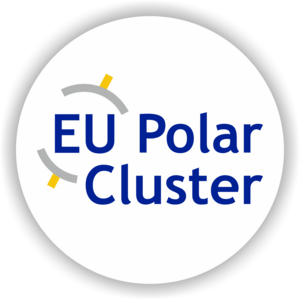RV Polarstern, DE

RV Polarstern, DE
Vessel is owned by the German government represented by the Federal Ministry of Education and Research, who entrusts the Alfred Wegener Institute (AWI), Helmholtz centre for polar and marine research with utilizing it for German polar research.
Contact
SCHIFFSKOORD[at]AWI.DE
Location
Homeport: Bremerhaven
Website
https://www.awi.de/en/expedition/research-vessel-and-cutter/polarstern.html
https://spaces.awi.de/display/EFPW/Polarstern+-+Wiki
Facilities
Research icebreaker, ice class PC3, 118 m length, capability of hosting 48 scientists and technicians. POLARSTERN operates an average of 305 days a year, visiting both poles during the respective summer periods. It has 9 scientific labs in which biological, geological, and geophysical but also glaciological, chemical, oceanographic and meteorological research is conducted. POLARSTERN can operate in the pack ice zone: a double-walled steel hull and 20,000 horsepower allow her to break through 1.5-metre-thick ice; thicker ice can be overcome by ramming. It is equipped for sustained operations at temperatures as low as -50°C and can even overwinter in the polar seas as it did during the MOSAiC expedition.
PRV Polarstern is a double-hulled icebreaker operational at temperatures as low as -50 °C. The ship is able to sail through 2 m thick ice with a speed of 5 knots, and it breaks ice up to 3 m thickness. The ship contains nine research laboratories for biological, geological, geophysical, glaciological, chemical, oceanographic and meteorological research. Additional laboratory containers may be stored on and below deck. Refrigerated rooms and aquaria permit the transport of samples and living marine fauna.
POLARSTERN, operated by the Alfred-Wegener-Institut Helmholtz-Zentrum für Polar- und Meeresforschung, is an ice going research and supply vessel. The main operation areas are the icecovered seas of the northern and southern polar regions. The ship provides ideal working conditions for almost all disciplines of marine sciences, atmospheric and glaciological research. It can break ice up to 2m continuously and can operate up to 90 days at sea. POLARSTERN is therefore ideally suited for often long expeditions to remote polar regions. POLARSTERN regularly supplies the Antarctic research stations, especially the Neumayer Station III and the Kohnen Station (Alfred-Wegener-Institut Helmholtz-Zentrum für Polar- und Meeresforschung, 2016a). In the last 35 years POLARSTERN was in average 310 days per year at sea, she is the major research tool of the German polar research programme.
Services offered
POLARSTERN is offered with the full suite of state-of-the-art onboard equipment. Experienced crew and technicians will support the science team to ensure their objectives are achieved. Two helicopters and inflatable boats are available for research.
Unit of access:
User/day
What is included in the Access
Preparatory work and specific training courses, full access to the icebreaker including all onboard equipment and instrumentation, logistical support pre and post cruise and technical support onboard is included. The typical duration of work is 42 days. POLARSTERN cruises are scheduled two years in advance and users will join already scheduled expeditions which take place in the areas they want to visit.
Availability for access in the 2024 call
Limited personal access: 20. Nov. – 17. Dec. -> Transit Bremerhaven – Wavis Bay.
Remote Access:
29. May – 29. Oct (Arctic season).
Operational area
Limited personal access: 20. Nov. – 17. Dec. -> Transit Bremerhaven – Wavis Bay.
Only remote access: 29.05. – 30.06. Fram Strait 03.07. – 07.09. Central Arctic 10.09. – 29.10. NE-Greenland shelf
Time frame for access preparation
Time frame to receive the documentation from RI users (after access is granted): Seasonal Coordination Meeting: At this meeting, the ship coordination discusses together with the applicants of main user proposals, with approx. 1 – 2 years’ foresight for each Arctic or Antarctic season, to what extent approved applications can be implemented, also in combination with existing secondary user requirements. https://spaces.awi.de/display/EFPW/Planning+meetings
Time frame for logistic arrangements to access the RI:
About 7-6 month before the expedition starts a planning meeting will be held by the chief scientist of the expedition with focus on logistical requirements. https://spaces.awi.de/display/EFPW/Planning+meetings.
Permits, licenses and training
Researchers must familiarise themselves with applicable regulations and obtain all relevant permits from the relevant authorities. Examples are: permits for work in other countries EEZs, permits for seismic work, permits for certain sea floor disturbing activities, or experiments on living animals.
Medical guidelines
A medical examination according to Awi reqiurements must be passed. https://spaces.awi.de/display/EFPW/Medical+Examination.

